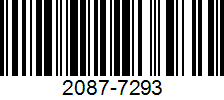PENGARUH PIJAT REFLEKSI TERHADAP PENINGKATAN KUALITAS DAN KUANTITAS TIDUR PADA ANAK USIA PRASEKOLAH
DOI:
https://doi.org/10.37776/zkeb.v15i3.1892Abstract
Preschool children are in a period of change between infant and school age. Children start many activities at this age that can decrease the quality and quantity of sleep. Nowadays, children mostly sleep only 8-10 hours a day. Preschoolchildren need 11-12 hours a day to sleep. Lack of quality and quantity of sleep can decrease preschool growth and development in intelligence. This research aims to study the quality and quantity of preschool children. This study used a pre-experimental design. Samples were preschool children in the work area of the Tanjung Balai Karimun Health Center. The sample size was 7 children, recruited using purposive sampling. Data were collected through a questionnaire for quality and quantity of sleep and through observation to know the influence of reflection massage. The Wilcoxon Signed Rank Test analyzed quality data, and the Paired Sample T Test analyzed quantity data with a significance level of α <0,05. The results of this study revealed that there was a change in sleep quantity. There was also a change in sleep quality, but not significant. The Wilcoxon Signed rank test for sleep quality showed that α = 0,034. The Paired Sample T test for sleep quantity showed α = 0,003. From the results, we can conclude that a reflection massage influences/affects the quality and quantity of sleep. Reflection massage can increase the quality and quantity of sleep. The major function of reflection massage is stimulating the effector organ to decrease strain and relax the body. This condition is needed to get good quality and quantity of sleep. It concluded that reflection massage influences the increasing quality and quantity of children's sleep. Keywords : Preschool, Quality And Quantity Of Sleep, Reflection MassageDownloads
References
Abbasi, S., Mehdizadeh, S., & Payami Bousari, M. (2020). The effect of foot reflexology massage on children's sleep quality with acute lymphoblastic leukemia. Iranian Journal of Pediatric Hematology and Oncology, 10(1), 1-9.
Anand, K. J. S., & Hickey, P. R. (2019). Pain and its effects in the human neonate and fetus. New England Journal of Medicine, 380(22), 2118-
Astill, R. G., Van der Heijden, K. B., Van Ijzendoorn, M. H., & Van Someren,
E. J. (2012). Sleep, cognition, and behavioral problems in school-age children: A century of research meta- analyzed. Psychological Bulletin, 138(6), 1109-1138.
Berger, R. H., Miller, A. L., Seifer, R., Cares, S. R., & LeBourgeois, M. K. (2018). Acute sleep restriction effects on emotion responses in 30‐to 36‐month‐old children. Journal of Sleep Research, 27(4), e12667.
Bernier, A., Beauchamp, M. H., Bouvette- Turcot, A. A., Carlson, S. M., & Carrier, J. (2018). Sleep and cognition in preschool years: Specific links to executive functioning. Child Development, 89(5), 1791-1803.
Bruni, O., Angriman, M., Melegari, M. G., & Ferri, R. (2022). Pharmacological and non-pharmacological treatments of insomnia in children with attention-deficithyperactivity disorder. Expert Opinion on Pharmacotherapy, 23(7), 773-782.
Caldwell, B. A., Redeker, N. S., & Antonelli, M. (2019). The impact of pediatric sleep problems on family functioning and parental stress. Journal of Family Nursing, 25(1), 115-141.
Cassidy, J., & Shaver, P. R. (Eds.). (2016). Handbook of attachment: Theory, research, and clinical applications (3rd ed.). Guilford Press.
Chaput, J. P., Gray, C. E., Poitras, V. J.,
Carson, V., Gruber, R., Birken, C. S.,
... & Tremblay, M. S. (2017). Systematic review of the relationships between sleep duration and health indicators in the early years (0–4 years). BMC Public Health, 17(5), 855.
Chen, X., Gelaye, B., & Williams, M. A. (2022). Cross-cultural perspectives on pediatric sleep: Implications for research and clinical practice. Sleep Medicine Reviews, 61, 101568.
Cheung, A. T., & Song, Y. (2020). The impact of a parent-implemented bedtime routine on sleep outcomes in young children: A randomized controlled trial. Sleep Medicine, 68, 61-67.
Field, T. (2019). Social touch, CT touch and massage therapy: A narrative review. Developmental Review, 51, 123-145.
Field, T., Cullen, C., Figueiredo, B., Daycare Center Sleep Team, Gory- Filo, L., & Sundseth, S. (2016). Massage therapy for infants and children. Journal of Developmental & Behavioral Pediatrics, 37(9), 693-
Gruber, R., Cassoff, J., Frenette, S., Wiebe, S., & Carrier, J. (2012). Impact of sleep extension and restriction on children's emotional lability and impulsivity. Pediatrics, 130(5), e1155-e1161.
Guan, L., Collet, J. P., Yuskiv, N., Skippen, P., Brant, R., & Kissoon, N. (2018). The effect of massage therapy on autonomic activity in critically ill children. Evidence-Based Complementary and Alternative Medicine, 2018.
Jiang, L., Qin, X., Li, X., Li, Y., & Lin, Z. (2023). The Effects of Foot Reflexology on Sleep Quality and Related Factors in Preschool Children: A Systematic Review and Meta-Analysis. International Journal of Environmental Research and Public Health, 20(3), 2163.
Kim, M. S., Kim, H. D., & Kim, J. W.
(2021). The effect of foot reflexology on sleep quality and fatigue in patients with breast cancer undergoing radiation therapy. Asian Oncology Nursing, 21(1), 52-60.
Koç, T., & Gözen, D. (2020). The effect of foot reflexology on acute pain and anxiety in pediatric patients with cancer: A randomized controlled trial. Complementary Therapies in Medicine, 51, 102388.
LeBourgeois, M. K., Hale, L., Chang, A. M., Akacem, L. D., Montgomery- Downs, H. E., & Buxton, O. M. (2017). Digital media and sleep in childhood and adolescence. Pediatrics, 140(Supplement 2), S92- S96.
Li, S. H., Bronstein, M., & Goh, D. Y. T. (2023). Implementation of a nurse- led infant sleep intervention program in primary care: A mixed-methods study. Journal of Pediatric Nursing, 68, 59-67.
Li, J., Yao, M., Hu, Z., & Li, J. (2022). Foot
reflexology for sleep disorders in children: A systematic review and meta-analysis. Complementary Therapies in Medicine, 70, 102848.
Matricciani, L., Paquet, C., Galland, B., Short, M., & Olds, T. (2019). Children's sleep and health: A meta- review. Sleep Medicine Reviews, 46, 136-150.
Meltzer, L. J., Plaufcan, M. R., Thomas, J. H., & Mindell, J. A. (2014). Sleep problems and sleep disorders in pediatric primary care: Treatment recommendations, persistence, and health care utilization. Journal of Clinical Sleep Medicine, 10(4), 421-
Melzack, R., & Wall, P. D. (1965). Pain mechanisms: a new theory. Science, 150(3699), 971-979.
Mindell, J. A., & Williamson, A. A. (2018). Benefits of a bedtime routine in young children: Sleep, development, and beyond. Sleep Medicine Reviews, 40, 93-108.
Mindell, J. A., Leichman, E. S., DuMond, C., & Sadeh, A. (2018). Sleep and social-emotional development in infants and toddlers. Journal of Clinical Child & Adolescent Psychology, 47(sup1), S37-S50.
Mindell, J. A., Williamson, A. A., & Hoban, T. F. (2020). Sleep in children and adolescents: Developmental aspects and treatment considerations. Neurotherapeutics, 17(1), 140-153.
Moayedi, M., & Davis, K. D. (2013). Theories of pain: from specificity to gate control. Journal of Neurophysiology, 109(1), 5-12.
National Institutes of Health. (2022). Sleep deprivation and deficiency. Retrieved from
https://www.nhlbi.nih.gov/health- topics/sleep-deprivation-and- deficiency
Owens, J. A., & Mindell, J. A. (2022). Pediatric sleep medicine: Current challenges and future directions. Sleep Medicine Reviews, 62, 101591.
Özkan, F., & Zincir, H. (2021). The effect of foot reflexology on sleep and fatigue in children with acute lymphoblastic leukemia: A randomized controlled trial. European Journal of Oncology Nursing, 50, 101889.
Paruthi, S., Brooks, L. J., D'Ambrosio, C., Hall, W. A., Kotagal, S., Lloyd, R.
M., ... & Wise, M. S. (2016).
Recommended amount of sleep for pediatric populations: a consensus statement of the American Academy of Sleep Medicine. Journal of Clinical Sleep Medicine, 12(6), 785-
Sadeh, A., Tikotzky, L., & Scher, A. (2010). Parenting and infant sleep. Sleep Medicine Reviews, 14(2), 89-
Sánchez-Ortuño, M. M., & Edinger, J. D. (2012). A penny for your thoughts: Patterns of sleep-related beliefs, insomnia symptoms and treatment outcome. Behaviour Research and Therapy, 50(2), 187-193.
Tham, E. K., Schneider, N., & Broekman,
B. F. (2017). Infant sleep and its relation with cognition and growth: a narrative review. Nature and Science of Sleep, 9, 135.
Tikotzky, L., & Shaashua, L. (2012). Infant sleep and early parental sleep-related cognitions predict sleep in pre-school children. Sleep Medicine, 13(2), 185-
Touchette, E., Petit, D., Séguin, J. R., Boivin, M., Tremblay, R. E., & Montplaisir, J. Y. (2007). Associations between sleep duration patterns and behavioral/cognitive functioning at school entry. Sleep, 30(9), 1213-1219.
Vickers, A., Zollman, C., & Payne, D. K. (2021). Complementary and alternative medicine. Western Journal of Medicine, 175(2), 125- 128.
Wang, Y. Y., Chang, H. Y., & Lin, C. Y. (2021). Meta-analysis of the effects of aromatherapy on sleep quality in older adults. Complementary Therapies in Medicine, 56, 102598.
World Health Organization. (2019). WHO traditional medicine strategy: 2014- 2023. World Health Organization.
Zhao, J., Zhao, Y., & Wang, Q. (2020). The effect of foot reflexology on sleep quality and fatigue in patients with rheumatoid arthritis: A randomized controlled trial. Complementary Therapies in Clinical Practice, 40, 101219.
Downloads
Published
How to Cite
Issue
Section
License
Copyright (c) 2025 Annisa Anggria Sari, Miftahul Jannah, Astri Yuniftri

This work is licensed under a Creative Commons Attribution 4.0 International License.
Manuskrip yang diserahkan penulis haruslah sebuah karya yang tidak melanggar hak cipta (copyright) yang ada. Naskah yang dimasukkan harus yang belum pernah diterbitkan dan tidak dikirimkan pada waktu yang bersamaan kepada penerbit lain. Hak cipta atas semua material termasuk yang berbentuk cetak, elektronik dan bentuk lainnya dipegang oleh Zona Kebidanan. Setelah manuskrip telah melewati proses penyuntingan substansi dan positif diterima, penulis mengirimkan berkas Pernyataan Hak Cipta ke alamat redaksi Zona Kebidanan.















